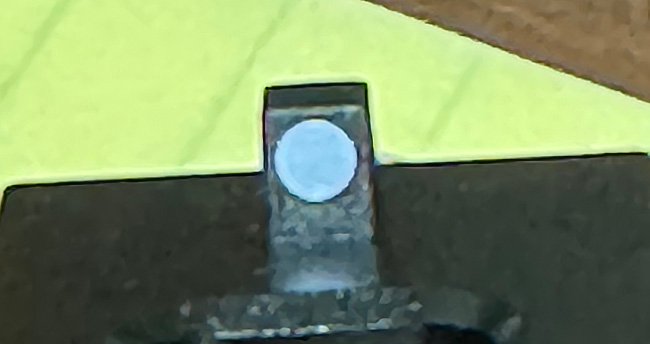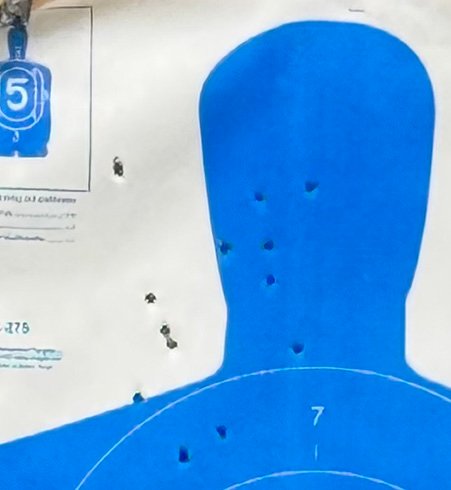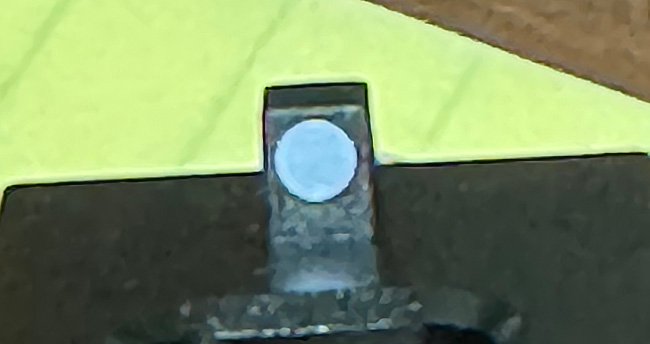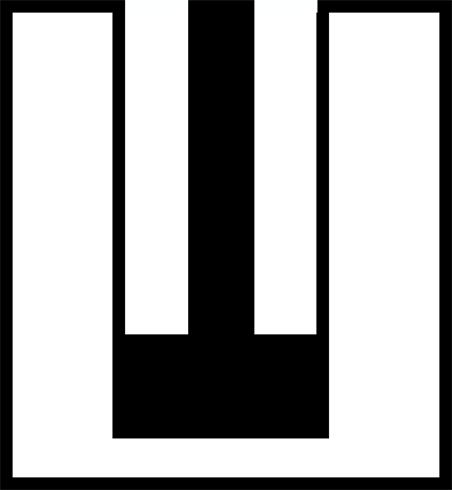
This report covers:
- Glock 19 clone front sight
- Front sight too wide
- Defense sights
- Front sight
- What is precision?
- Markpoint sights
- No optics!
- Summary
Today we will look at gun sights— a fundamental part of shooting technology that new shooters seem to be doing everything possible to ignore.
What prompted this report was a question I read in a chat forum about a particular airgun’s sights and also the comment of Will S. about my mention of the Glock 19 clone’s sights being crude, “Would you please elaborate on the crudeness of the sights, vs sights that are made for precision?”
I gave Will a quick answer but decided that more was needed. Then, after reading a comment on a chat forum about the sights on the Umarex Markpoint, I knew I needed to say more about them as well. Today I do both
Glock 19 clone front sight
You know—sometimes BB Pelletier gets it wrong. Yes, he does. I wouldn’t fool you. After reading Will S’s comment I took the time to examine the Glock 19 clone sights in detail, I was surprised.
After that day when I shot 50 rounds through the pistol I was certain these sights were crude. And they are, but not for the reason I thought.
Front sight too wide
When I shot the pistol at the indoor gun range I felt the clone’s front sight blade was too wide for the rear notch. Now that I’ve had longer to examine it I see that it is ever-so-slightly smaller than the rear notch when the pistol is held at arm’s length. But only in [erfect lighting. The design of this front blade means that in all but perfect lighting (target lit brightly and the sights in the dark) the front sight appears to fill the rear sight notch completely, leaving no room for a proper sight picture.
Only when the light is perfect can a thin sliver of light be seen in the rear notch on either side of the front ramp. Most of the time the front sight appears to fill the rear sight notch completely, and without that sliver of light the shooter cannot tell when the sights are centered on the target.
Defense sights
Defense pistol sights are designed for rapid acquisition. That makes them ideal for defense use. At the distance that used to be considered the maximum for self-defense, which was 21 feet, the sights are good enough for a quick center-of-mass shot. The center-of-mass refers to the center of a human torso. Most of the time that’s good enough, but not always.
In the church shooting at West Freeway Church of Christ in White Settlement, Texas, on December 29, 2019, the perpetrator was shot in the head from a distance of about 40 feet by a church security guard. That shot killed the shooter instantly, but it required great skill. This is a situation where great sights are needed.
The Glock 19 clone I reported on would not be a pistol for such a shot. I might be able to make it with my Sig P365, but even then it would be a tough shot. Look at a closeup of my blue silhouette target from the Glock clone report and see what I mean.

These head shots were taken with the Glock 19 clone after my hand was stinging from the recoil. I was sniping the target because of the pain at this point. The distance was only 21 feet!
Front sight
The front sight on the Glock 19 clone is narrow enough to fit inside the rear sight notch. if the lighting is perfect (bright light on the target and no light on the sights), this sight might work for a precision shot. I say might because of the huge white dot in the middle of the front post.

The Glock 19 clone front sight has a large white dot. It’s good for rapid target acquisition but lousy for precision.
What is precision?
For what we are discussing in this report, precision would be the ability to place all shots in a 2-inch circle at 40 feet. Don’t fixate on those numbers. What I mean by this definition of precision is you should be about to hit the orange in a bowl of fruit and leave the bananas alone. With a defense pistol you should be able to hit the bowl of fruit. That large white dot helps you hit the fruit bowl quickly, but you’ll only hit the orange by luck.
When I sight with the Glock clone the front sight seems to fill the rear sight notch. The dot is easy to put on a target but to hit something as small as an orange at 40 feet it won’t work‚ at least not for me. So it’s good for defense but not for precision.
Markpoint sights
Now I’ll discuss the sights on the Umarex Markpoint pistol. I saw on a forum where a shooter said he did not like those sights. That may have been his personal preference or he could have been a newer shooter who just doesn’t know how to use open sights on handguns. I find these particular sights almost like training wheels. Use them properly and you can’t miss, or at least you shouldn’t be able to. But they are strange-looking.

Markpoint sights. The front blade is thin and tall. It appears odd, but is easy to align.
I will say that with sights like these you notice every little shake of the gun. Maybe that’s why the person doesn’t like them.
The reason I say these sights are so good is because they are so easy to see. The front blade is narrow so there is a lot of room to center it in the rear notch. And the top of the rear notch is flat, making it easy to level the front sight. Do that and put your target on top of the front blade and you’ll hit your target!
No optics!
These days shooters seem insistent on using optical sights on their long guns. Even many of the armies of the world now have optical sights on their rifles. What that means is people are forgetting how to use open sights like the ones we have been discussing.
That’s all well and good until it isn’t. What will a shooter who doesn’t know how to use open sights do when there are no optical sights available? It’s like asking someone who was not trained to read cursive to read a handwritten note—it doesn’t work.
Sure, a scope reticle is easier to use than a post and notch, but when the erector tube fails and the scope won’t zero whaddaya gonna to do? I prefer to use optical sights, too, but I still practice with non-optical sights a lot—just to keep the skill alive.
Summary
Non-optical or open sights are basic. Using them is a fundamental part of the shooting sports. It’s not the one we talk about or even think about, but using them is a basic skill every shooter should master.
The post An eye on sights first appeared on Pyramyd AIR.
Leave a Reply
You must be logged in to post a comment.